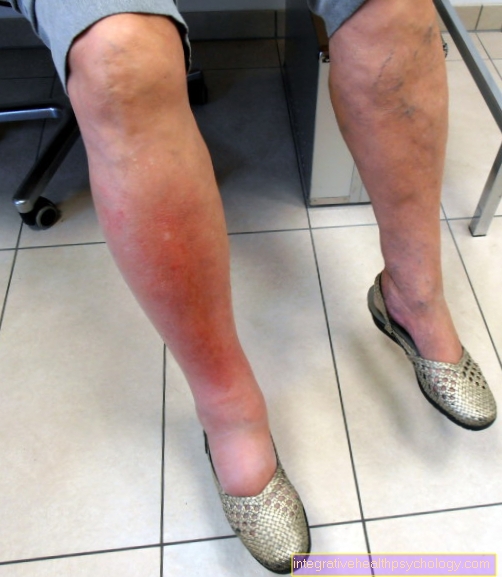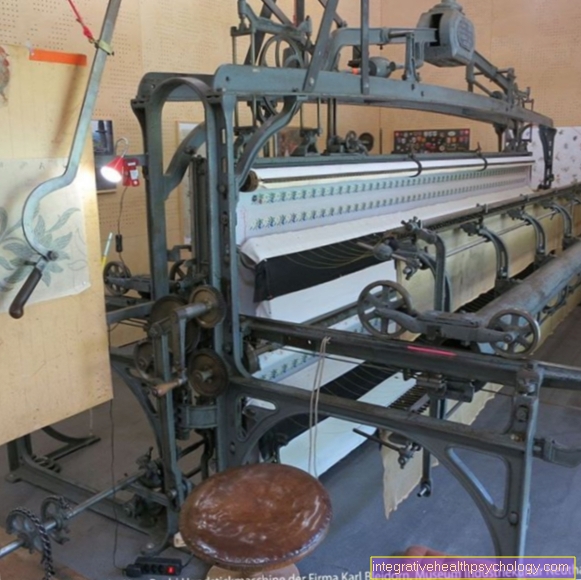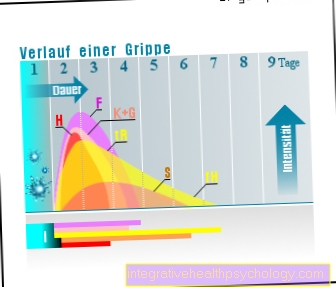What is a finger pad?
Definition of a finger block
The finger block, also known as Oberst's conduction anesthesia, is a regional anesthetic procedure to numb a finger or toe.
This procedure is used for minor operations or injuries that have to be sutured.
Since each finger has four main nerves, these must each be hit by the local anesthetic. Two punctures are necessary for this, in each of which a depot of the anesthetic is placed in two places.
The muscles are not affected by the anesthetic, as these are located in the forearm for the fingers.
What is a Regional anesthesia? Learn more about the background to regional anesthetic procedures.

Indications for a finger block
Oberst's conduction anesthesia is used when an operation is to be performed on a finger or toe, or when there is an isolated injury on a single finger that needs to be cleaned and sealed.
This procedure is particularly useful for small injuries, as, unlike traditional local anesthesia, the cannula is not inserted into the tissue that is already painful.
If an injury or an operation affects more than one finger, a different form of regional anesthesia is usually chosen and not each finger is anesthetized individually.
Which surgeries can be performed with a foot block?
A foot block is a very similar procedure to a finger block. The feeding nerves are numbed with several injections of a local anesthetic above the ankle.
The procedure can be used to perform local operations on the foot and to treat injuries.
For operations on the ankle joint or on the muscles and tendons, a different procedure should be chosen, as the muscles are partly not anesthetized as they are supplied by a nerve above the anesthetic ring.
Read more on the topic: Foot block
What drugs are used for a finger pad?
Various drugs can be used for regional anesthesia procedures.
The historically best known narcotic is cocaine. Although cocaine is actually no longer used in medicine, today's local anesthetics are based on this substance and work via similar mechanisms.
Possible local anesthetics are procaine, lidocaine, bubivacaine, ropivacaine, and prilocaine. The various active ingredients differ in their effectiveness, the onset of action, the duration of action and their controllability and can therefore be selected specifically for each use.
Get more information about how the Local anesthetics.
Performing the finger block
The first step in anesthesia is always to educate the patient. The patient is given important information about the drugs and their possible side effects, and a procedure is selected.
After the active ingredient has been selected, the planned puncture site is disinfected. The finger block consists of two puncture points starting from the extensor side of the finger. The foot block requires five injections around the lower leg just above the ankle.
The cannula is inserted into the skin and, when using the finger block, is first pushed forward to the nerve on the flexor side. There the first depot of local anesthetic is injected and then the cannula is withdrawn to the nerve on the extensor side. This is repeated on the other side of the finger.
Larger nerves are involved in the foot block and these are sometimes better protected. For this reason, multiple injections must be made and each nerve must be numbed individually.
After a few minutes, the finger or foot should become numb and no longer feel pain. If areas do not become numb, another injection will be made up. Catheters can also remain in place during longer operations so that the anesthetist can give additional local anesthetics during the procedure.
Duration of a finger block
The duration of a finger block or foot block depends on various factors.
Basically, the anesthetist can extend the anesthesia at any time, so a rough time can only be given after the last injection.
Each local anesthetic has a different duration of action and a different time until it starts to work. In some cases, different narcotics are combined. Most local anesthetics last about two hours after the last injection. Individual differences also change the duration of the effect.
What are the risks and side effects?
Regional anesthesia, and thus also Oberst's conduction anesthesia, is a procedure with relatively few side effects.
Local allergic reactions are possible.
Accidental injection into the nerve, and not next to it, as usual, can cause nerve damage and abnormal sensations.
In rare cases, a systemic allergic reaction, i.e. an allergic reaction affecting the whole body, can lead to allergic shock. For this reason, if you have a known allergy to the local anesthetic, another procedure should be selected.
If the local anesthetic gets into the bloodstream unplanned, stronger side effects are possible. You may feel sick, dizzy, light-headed, and restless. In rare extreme cases, seizures and respiratory paralysis are possible.
Local anesthetics also have an impact on the cardiovascular system. The strength of the heart and the frequency of beats decrease and blood pressure can drop. In some cases, cardiac arrhythmias develop up to sudden heart failure. Since these side effects occur particularly in patients with decompensated cardiac insufficiency or conduction disorders, a different anesthesiological procedure should be used in these cases.
Read more about the Side effects of local anesthetics.





























